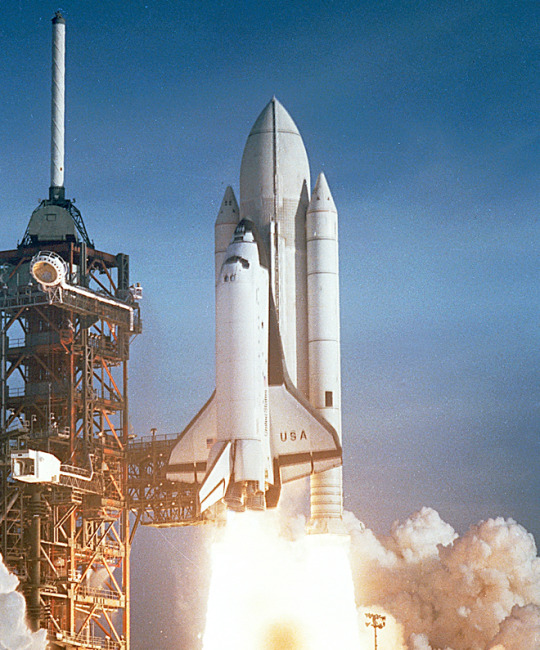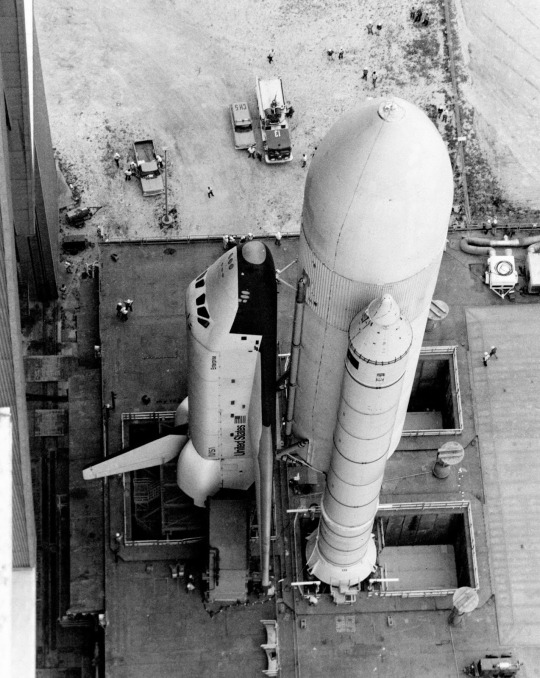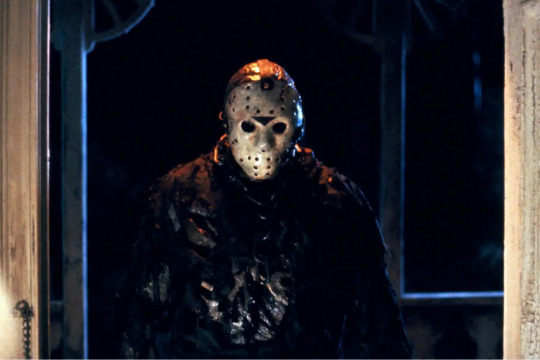#1/11/20
Text
And I'm just a little messed up
I'm a little out of my head
[Song link] [YouTube link]
#detective conan#case closed#amv#my amvs#video#eye strain#shinichi kudo#conan edogawa#ran mori#funimation english dub script#bang zoom! entertainment english dub script#whew finally got this done!#thank you everyone for all the support on the wip 🥺#i hope the final version is good too!#sources used are eps 1 2 3 5 10 11 38 43 48-49 54 57 76 78 85 88 91 128 129 139 174 192-193 239 270 286 310-311 361 371 387 465 942 1001#films 1 3 4 6 7 9 13 15 20 and tv special 6 (episode one: the great detective turned small)#ova 9 and ops 11 16 27 37 and 56 and eds 3 4 9 and 10#voice clips are (in order) m1 ep 5 ep 78 ep 43 preview ep 11 m3 ep 54 ep 1 m6 ep 57 ep 57 tv special 6 m3 ep 2 ep 38 ep 91 m4 m4 ep 76 ep 2#song is#messed up#by lizzy land#nicopop. poolside remix
165 notes
·
View notes
Note
headcanons abt how each cabin behaves at dinner time in the dining pavilion (bc I think each one has its own table) would be an amazing concept! love ur blog
dinner time
an average dinner at camp half-blood



⚡️⋆.ೃ࿔* zeus cabin
are usually the last cabin to get to the dining pavilion so they can make a dramatic entrance
would eventually get mad at cabin 5 for making fun of them for being too extravagant and start an argument with half of the cabins who tried to calm them down.
🦚⋆.ೃ࿔* hera cabin
cabin 2’s table was originally placed next to cabin 1’s one but mr. d moved it to the opposite side of the pavilion to avoid conflicts between these two cabins during dinner.
they’d spend most of the time chatting with cabin 10 and the rest of their dinner would be basically them complaining about the food.
🌊⋆.ೃ࿔* poseidon cabin
they don’t catch so much attention when arriving at the dining pavilion. most of the time they’re too tired to even talk between themselves during dinner because of their training sessions.
just give them 30 seconds to be full of energy again and teaming up with cabin 11 to throw water at mr. d.
💐⋆.ೃ࿔* demeter cabin
they are always the first ones to get there. demeter’s kids like to take flowers to decor the tables and sometimes a few of them bake/cook something to share with their friends.
they are really polite and calm, just trying to eat their dinner in peace and go back to what they were doing.
⚔️⋆.ೃ࿔* ares cabin
they’re usually really loud, especially if they had just won capture the flag, and would make sure to bump into cabin 6’s table and tease them for losing.
i think they’d have childish eating habits, like not liking vegetables and salad. they are the most likely to start a food war at some point too.
🦉⋆.ೃ࿔* athena cabin
the quiet ones who just wants to eat and go back to what they were doing before. is really common for them to take books and notebooks to the dinning pavilion because they “can’t lose time”
chiron don’t let them study in the dinning pavilion anymore because they’d stop eating when their food gets cold because of them getting distracted by their books
🌞⋆.ೃ࿔* apollo cabin
they usually arrive together with another cabin, mostly cabin 11 and 18, laughing and singing.
don’t really care about the rule of not seating in another’s cabin table, and they’d go around all the tables so they can eat with all their friends.
🌙⋆.ೃ࿔* hunters of artemis
when the hunters are in camp half-blood, they are the first ones to arrive and the first ones to leave, rare exceptions.
don’t usually interact with other cabins, and just talk between themselves.
🛠️⋆.ೃ࿔* hephaestus cabin
cabin 9 only go to the dining pavilion to get food to spend the night working and occasionally talk to some of their friends too.
they eat a lot though, and sometimes don’t manage to sneak out of the pavilion without getting caught when they are trying to take some food to their cabin
💘⋆.ೃ࿔* aphrodite cabin
some of them are usually late because they spend too much time getting ready for dinner, but others like talking to cabin 4 while they decor the tables.
they pretend to eat only healthy food but are addicted to desserts and won’t leave without eating something sweet.
📨⋆.ೃ࿔* hermes cabin
the other demigods always try to get to the dining pavilion before cabin 11 because they know that hermes’s children like playing pranks on who is late to dinner.
they also eat a lot because they need a lot of energy to keep up with their training schedule
🍷⋆.ೃ࿔* dionysus cabin
mr d. go to their cabin to check if they getting ready to dinner and then waits until all of his kids arrive to the dining pavilion to start eating.
always try to order wine from that magic cups but they never manage to do it. they get scolded by chiron really often because of that but at some point mr d. transformed him into a frog so he’d stop bothering his kids
☠️⋆.ೃ࿔* hades cabin
i feel like they don’t often have dinner with the others, but sometimes will eat in the dinning pavilion just so everyone knows they’re still there.
when they are not feeling like going to the dinning pavilion, their friends would bring some food for them in cabin 13 and they’d probably have a sleepover after that.
🌈⋆.ೃ࿔* iris cabin
they’re pretty quiet, just go there to say hello to everybody, eat and get some snacks to spend the night or to share with some friends later.
they like playing with the colors of the foods, like changing the food’s color or making it shine.
💤⋆.ೃ࿔* hypnos cabin
they might be a bit lazy but are never going to deny food. when arriving at the dinning pavilion they’d go straight to their friends table to talk a little before the food is served.
they’d never eat their whole meal because they would get tired of chewing at some point.
⚖️⋆.ೃ࿔* nemesis cabin
they have an habit of being the last ones to start eating because they think it’s unfair to have a meal while others are hungry.
would get so mad at people wasting food, or starting silly arguments (cabin 1 x cabin 5)
🏆⋆.ೃ࿔* nike cabin
they’d be either too tired while eating because of the training or would create dumb competitions
they have weird eating habits. i don’t really know how to explain but they eat weird food.
🧸⋆.ೃ࿔* hebe cabin
they are often scolded by cabin 16 for playing with their food or for speaking too loudly.
they’re just want the dessert, nothing else. (chiron won’t let them eat only sweet though)
🍀⋆.ೃ࿔* tyche cabin
never had to face situations like ordering something they don’t like or their food getting cold, because of their luck.
cabin 11 still tries to throw a pie on their faces but it just never works.
🔮⋆.ೃ࿔* hecate cabin
they put potions on the other cabins food sometimes, just to see the effect it’d have in people.
they take some food to the satyrs who live in the woods in exchange for magic ingredients for their studies.
⤷ author’s note:
that’s probably the longest hc i’ve ever written, but i hope you guys enjoy it🫶
(ps: before someone says anything about cabin 2 being here, i just want to say that i decided to include them here because i already made other hc about hera’s children so i thought it was fair to have them here)
#percy jackon and the olympians#percy jackson#heros of olympus#pjo hoo toa#pjo imagine#pjo tv show#rick riordan#riordanverse#jason grace#headcanon#cabin 1#cabin 2#cabin 3#cabin 4#cabin 5#cabin 6#cabin 7#cabin 8#cabin 9#cabin 10#cabin 11#cabin 12#cabin 13#cabin 14#cabin 15#cabin 16#cabi 17#cabin 18#cabin 19#cabin 20
135 notes
·
View notes
Text

A Date to Remember <3
#nyanaknifeart#art#illustrations#welcome home#welcome home puppet show#welcome home arg#welcome home fanart#23 8 1 20 4 15 5 19 5 22 5 18 25 20 8 9 14 7 13 5 1 14 20 8 9 19 12 15 15 11#19 15 6 6 9 6 25 15 21 18 5 19 5 5 9 14 7 20 8 9 19 7 15 15 4 12 21 3 11 6 9 14 4 9 14 7 1 12 12 15 6 9 20
375 notes
·
View notes
Text
Favourite Episode Masterlist
#tma#the magnus archives#tma poll#tma season 1#tma season one#tma 11#tma 12#tma 13#tma 14#tma 15#tma 16#tma 17#tma 18#tma 19#tma 20#magpod
24 notes
·
View notes
Text
Cancelled Missions: NASA's October 1977 Space Shuttle Flight Itinerary
"Soon after President Richard Nixon gave his blessing to the Space Shuttle Program on January 5, 1972, NASA scheduled its first orbital flight for 1977, then for March 1978. By early 1975, the date had slipped to March 1979. Funding shortfalls were to blame, as were the daunting engineering challenges of developing the world's first reusable orbital spaceship based on 1970s technology. The schedule slip was actually worse than NASA let on: as early as January 32, 1975, an internal NASA document (marked 'sensitive') gave a '90% probability date' for the first Shuttle launch of December 1979.
In October 1977, Chester Lee, director of Space Transportation System (STS) Operations at NASA Headquarters, distributed the first edition of the STS Flight Assignment Baseline, a launch schedule and payload manifest for the first 16 operational Shuttle missions. The document was in keeping with NASA's stated philosophy that reusable Shuttle Orbiters would fly on-time and often, like a fleet of cargo airplanes. The STS Utilization and Operations Office at NASA's Johnson Space Center (JSC) in Houston had prepared the document, which was meant to be revised quarterly as new customers chose the Space Shuttle as their cheap and reliable ride to space.
The JSC planners assumed that six Orbital Flight Test (OFT) missions would precede the first operational Shuttle flight. The OFT flights would see two-man crews (Commander and Pilot) put Orbiter Vehicle 102 (OV-102) through its paces in low-Earth orbit. The planners did not include the OFT schedule in their document, but the May 30, 1980 launch date for their first operational Shuttle mission suggests that they based their flight schedule on the March 1979 first OFT launch date.
Thirteen of the 16 operational flights would use OV-102 and three would use OV-101. NASA would christen OV-102 Columbia in February 1979, shortly before it rolled out of the Rockwell International plant in Palmdale, California.
As for OV-101, its name was changed from Constitution to Enterprise in mid-1976 at the insistence of Star Trek fans. Enterprise flew in Approach and Landing Test (ALT) flights at Edwards Air Force Base in California beginning on February 15, 1977. ALT flights, which saw the Orbiter carried by and dropped from a modified 747, ended soon after the NASA JSC planners released their document.
The first operational Space Shuttle mission, Flight 7 (May 30 - June 3, 1980), would see Columbia climb to a 225-nautical-mile (n-mi) orbit inclined 28.5° relative to Earth's equator (unless otherwise stated, all orbits are inclined at 28.5°, the latitude of Kennedy Space Center in Florida). The delta-winged Orbiter would carry a three-person crew in its two-deck crew compartment and the bus-sized Long Duration Exposure Facility (LDEF) in its 15-foot-wide, 60-foot-long payload bay.
Columbia would also carry a 'payload of opportunity' - that is, an unspecified payload. The presence of a payload of opportunity meant that the flight had available excess payload weight capacity. Payload mass up would total 27,925 pounds. Payload mass down after the Remote Manipulator System (RMS) arm hoisted LDEF out of Columbia's payload bay and released it into orbit would total 9080 pounds.

A page from the STS Flight Assignment Baseline document of October 1977 shows payloads and other features of the first five operational Space Shuttle missions plus Flight 12/Flight 12 Alternate
During Flight 8 (July 1-3, 1980), Columbia would orbit 160 n mi above the Earth. Three astronauts would release two satellites and their solid-propellant rocket stages: Tracking and Data Relay Satellite-A (TDRS-A) with a two-stage Interim Upper Stage (IUS) and the Satellite Business Systems-A (SBS-A) commercial communications satellite on a Spinning Solid Upper Stage-Delta-class (SSUS-D).
Prior to release, the crew would spin the SBS-A satellite about its long axis on a turntable to create gyroscopic stability and raise TDRS-A on a tilt-table. After release, their respective solid-propellant stages would propel them to their assigned slots in geostationary orbit (GEO), 19,323 n mi above the equator. Payload mass up would total 51,243 pounds; mass down, 8912 pounds, most of which would comprise reusable restraint and deployment hardware for the satellites.
The TDRS system, which would include three operational satellites and an orbiting spare, was meant to trim costs and improve communications coverage by replacing most of the ground-based Manned Space Flight Network (MSFN). Previous U.S. piloted missions had relied on MSFN ground stations to relay communications to and from the Mission Control Center (MCC) in Houston. Because spacecraft in low-Earth orbit could remain in range of a given ground station for only a few minutes at a time, astronauts were frequently out of contact with the MCC.
On Flight 9 (August 1-6, 1980), Columbia would climb to a 160-n-mi orbit. Three astronauts would deploy GOES-D, a National Oceanic and Atmospheric Administration (NOAA) weather satellite, and Anik-C/1, a Canadian communications satellite. Before release, the crew would raise the NOAA satellite and its SSUS-Atlas-class (SSUS-A) rocket stage on the tilt-table and spin up the Anik-C/1-SSUS-D combination on the turntable. In addition to the two named satellites, NASA JSC planners reckoned that Columbia could carry a 14,000-pound payload of opportunity. Payload mass up would total 36,017 pounds; mass down, 21,116 pounds.
Following Flight 9, NASA would withdraw Columbia from service for 12 weeks to permit conversion from OFT configuration to operational configuration. The JSC planners explained that the conversion would be deferred until after Flight 9 to ensure an on-time first operational flight and to save time by combining it with Columbia's preparations for the first Spacelab mission on Flight 11. The switch from OFT to operational configuration would entail removal of Development Flight Instrumentation (sensors for monitoring Orbiter systems and performance); replacement of Commander and Pilot ejection seats on the crew compartment upper deck (the flight deck) with fixed seats; power system upgrades; and installation of an airlock on the crew compartment lower deck (the mid-deck).
Flight 10 (November 14-16, 1980) would be a near-copy of Flight 8. A three-person Columbia crew would deploy TDRS-B/IUS and SBS-B/SSUS-D into a 160-n-mi-high orbit. The rocket stages would then boost the satellites to GEO. Cargo mass up would total 53,744 pounds; mass down, 11,443 pounds.
Flight 11 (December 18-25, 1980) would see the orbital debut of Spacelab. Columbia would orbit Earth 160 n mi high at 57° of inclination. NASA and the multinational European Space Research Organization (ESRO) agreed in August 1973 that Europe should develop and manufacture Spacelab pressurized modules and unpressurized pallets for use in the Space Shuttle Program. Initially dubbed the 'sortie lab,' Spacelab would operate only in the Orbiter payload bay; it was not intended as an independent space station, though many hoped that it would help to demonstrate that an Earth-orbiting station could be useful.
ESRO merged with the European Launcher Development Organization in 1975 to form the European Space Agency (ESA). Columbia's five-person crew for Flight 11 would probably include scientists and at least one astronaut from an ESA member country.
Flight 12 (January 30 - February 1, 1981), a near-copy of Flights 8 and 10, would see Columbia's three-person crew deploy TDRS-C/IUS and Anik-C/2/SSUS-D into 160-n-mi-high orbit. Payload mass up would total 53,744 pounds; mass down, 11,443 pounds.
JSC planners inserted an optional 'Flight 12 Alternate' (January 30 - February 4, 1981) into their schedule which, if flown, would replace Flight 12. Columbia would orbit 160 n mi above the Earth. Its three-person crew would deploy Anik-C/2 on a SSUS-D stage. The mission's main purpose, however, would be to create a backup launch opportunity for an Intelsat V-class satellite already scheduled for launch on a U.S. Atlas-Centaur or European Ariane I rocket. An SSUS-A stage would boost the Intelsat V from Shuttle orbit to GEO.
NASA JSC assumed that, besides the satellites, stages, and their support hardware, Columbia would for Flight 12 Alternate tote an attached payload of opportunity that would need to operate in space for five days to provide useful data (hence the mission's planned duration). Payload mass up would total 37,067 pounds; mass down, 17,347 pounds.

Space Shuttle Flights 13 through 18 would include the first orbital mission of the OV-101 Enterprise (Flight 17), during which astronauts would retrieve the LDEF payload deployed during Flight 7.
Flight 13 (March 3-8, 1981) would see three astronauts on board Columbia release NOAA's GOES-E satellite attached to an SSUS-D stage into a 160-n-mi-high orbit. OV-102 would have room for two payloads of opportunity: one attached at the front of the payload bay and one deployed from a turntable aft of the GOES-E/SSUS-D combination. Payload mass up would total 38,549 pounds; mass down, 23,647 pounds.
Flight 14 would last 12 days, making it the longest described in the STS Flight Assignment Baseline document. Scheduled for launch on April 7, 1981, it would carry a 'train' of four unpressurized Spacelab experiment pallets and an 'Igloo,' a small pressurized compartment for pallet support equipment. The Igloo, though pressurized, would not be accessible to the five-person crew. OV-102 would orbit 225 n mi high at an inclination of 57°. Mass up would total 31,833 pounds; mass down, 28,450 pounds.
Flight 15 (May 13-15, 1981) would be a near-copy of Flights 8, 10, and 12. OV-102 would transport to orbit a payload totaling 53,744 pounds; payload mass down would total 11,443 pounds. The JSC planners noted the possibility that none of the potential payloads for Flight 15 — TDRS-D and SBS-C or Anik-C/3 — would need to be launched as early as May 1981. TDRS-D was meant as an orbiting spare; if the first three TDRS operated as planned, its launch could be postponed. Likewise, SBS-C and Anik-C/3 were each a backup for the previously launched satellites in their series.
Flight 16 (June 16-23, 1981) would be a five-person Spacelab pressurized module flight aboard OV-102 in 160-n-mi-high orbit. Payloads of opportunity totaling about 18,000 pounds might accompany the Spacelab module; for planning purposes, a satellite and SSUS-D on a turntable behind the module was assumed. Payload mass up would total 35,676 pounds; mass down, 27,995 pounds.
Flight 17, scheduled for July 16-20, 1981, would see the space debut of Enterprise and the retrieval of the LDEF released during Flight 7. OV-101 would climb to a roughly 200-n-mi-high orbit (LDEF's altitude after 13.5 months of orbital decay would determine the mission's precise altitude).
Before rendezvous with LDEF, Flight 17's three-man crew would release an Intelsat V/SSUS-A and a satellite payload of opportunity. After the satellites were sent on their way, the astronauts would pilot Enterprise to a rendezvous with LDEF, snare it with the RMS, and secure it in the payload bay. Mass up would total 26,564 pounds; mass down, 26,369 pounds.
For Flight 18 (July 29-August 5, 1981), Columbia would carry to a 160-n-mi-high orbit a Spacelab pallet dedicated to materials processing in the vacuum and microgravity of space. The three-person flight might also include the first acknowledged Department of Defense (DOD) payload of the Space Shuttle Program, a U.S. Air Force pallet designated STP-P80-1. JSC called the payload 'Planned' rather than 'Firm' and noted somewhat cryptically that it was the Teal Ruby experiment 'accommodated from OFT [Orbital Flight Test].'
The presence of the Earth-directed Teal Ruby sensor payload would account for Flight 18's planned 57° orbital inclination, which would take it over most of Earth's densely populated areas. Payload mass up might total 32,548 pounds; mass down, 23,827 pounds.

Space Shuttle Flights 20 through 23 would include the first mission to make use of an OMS kit to increase its orbital altitude (Flight 21), the first European Space Agency-sponsored Spacelab mission (Flight 22), and the launch of the Jupiter Orbiter and Probe spacecraft (Flight 23)
Flight 19 (September 2-9, 1981) would see five Spacelab experiment pallets fill Columbia's payload bay. Five astronauts would operate the experiments, which would emphasize physics and astronomy. The Orbiter would circle Earth in a 216-n-mi-high orbit. Payload mass up would total 29,214 pounds; mass down, 27,522 pounds.
Flight 20 (September 30-October 6, 1981), the second Enterprise mission, would see five astronauts conduct life science and astronomy experiments in a 216-n-mi-high orbit using a Spacelab pressurized module and an unpressurized pallet. JSC planners acknowledged that the mission's down payload mass (34,248 pounds) might be 'excessive,' but noted that their estimate was 'based on preliminary payload data.' Mass up would total 37,065 pounds.
On Flight 21, scheduled for launch on October 14, 1981, Columbia would carry the first Orbital Maneuvering System (OMS) Kit at the aft end of its payload bay. The OMS Kit would carry enough supplemental propellants for the Orbiter's twin rear-mounted OMS engines to perform a velocity change of 500 feet per second. This would enable OV-102 to rendezvous with and retrieve the Solar Maximum Mission (SMM) satellite in a 300-n-mi-high orbit.
Three astronauts would fly the five-day mission, which would attain the highest orbital altitude of any flight in the STS Flight Assignment Baseline document. JSC planners noted that the Multi-mission Modular Spacecraft (MMS) support hardware meant to carry SMM back to Earth could also transport an MMS-type satellite into orbit. Payload mass up would total 37,145 pounds; mass down, 23,433 pounds.
On Flight 22 (November 25 - December 2, 1981), Enterprise might carry an ESA-sponsored Spacelab mission with a five-person crew, a pressurized lab module, and a pallet to a 155-to-177-n-mi orbit inclined at 57°. Payload mass up might total 34,031 pounds; mass down, 32,339 pounds.
During Flight 23 (January 5-6, 1982), the last described in the STS Flight Assignment Baseline document, three astronauts would deploy into a 150-to-160-n-mi-high orbit the Jupiter Orbiter and Probe (JOP) spacecraft on a stack of three IUSs. President Jimmy Carter had requested new-start funds for JOP in his Fiscal Year 1978 NASA budget, which had taken effect on October 1, 1977. Because JOP was so new when they prepared their document, JSC planners declined to estimate up/down payload masses.
Flight 23 formed an anchor point for the Shuttle schedule because JOP had a launch window dictated by the movements of the planets. If the automated explorer did not leave for Jupiter between January 2 and 12, 1982, it would mean a 13-month delay while Earth and Jupiter moved into position for another launch attempt.
Almost nothing in the October 1977 STS Flight Assignment Baseline document occurred as planned. It was not even updated quarterly; no update had been issued as of mid-November 1978, by which time the target launch dates for the first Space Shuttle orbital mission and the first operational Shuttle flight had slipped officially to September 28, 1979 and February 27, 1981, respectively.

The Space Shuttle Orbiter Columbia lifts off at the start of STS-1.
The first Shuttle flight, designated STS-1, did not in fact lift off until April 12, 1981. As in the STS Flight Assignment Baseline document, OV-102 Columbia performed the OFT missions; OFT concluded, however, after only four flights. After the seven-day STS-4 mission (June 27 - July 4, 1982), President Ronald Reagan declared the Shuttle operational.
The first operational flight, also using Columbia, was STS-5 (November 11-16, 1982). The mission launched SBS-3 and Anik-C/3; because of Shuttle delays, the other SBS and Anik-C satellites planned for Shuttle launch had already reached space atop expendable rockets.
To the chagrin of many Star Trek fans, Enterprise never reached space. NASA decided that it would be less costly to convert Structural Test Article-099 into a flight-worthy Orbiter than to refit Enterprise for spaceflight after the ALT series. OV-099, christened Challenger, first reached space on mission STS-6 (April 4-9, 1983), which saw deployment of the first TDRS satellite.

NASA put OV-101 Enterprise to work in a variety of tests and rehearsals (such as the 'fit check' shown in the image above), but did not convert it into a spaceflight-worthy Orbiter.
The voluminous Spacelab pressurized module first reached orbit on board Columbia on mission STS-9 (November 28- December 8,1983). The 10-day Spacelab 1 mission included ESA researcher Ulf Merbold and NASA scientist-astronauts Owen Garriott and Robert Parker. Garriott, selected to be an astronaut in 1965, had flown for 59 days on board the Skylab space station in 1973. Parker had been selected in 1967, but STS-9 was his first spaceflight.
The 21,500-pound LDEF reached Earth orbit on board Challenger on STS-41C, the 11th Space Shuttle mission (April 6-13, 1984). During the same mission, astronauts captured, repaired, and released the SMM satellite, which had reached orbit on 14 February 1980 and malfunctioned in January 1981. Challenger reached SMM without an OMS kit; in fact, no OMS kit ever reached space.
STS Flight Assignment Baseline document assumed that 22 Shuttle flights (six OFT and 16 operational) would occur before January 1982. In fact, the 22nd Shuttle flight did not begin until October 1985, when Challenger carried eight astronauts and the West German Spacelab D1 into space (STS-61A, October 30 - November 6, 1985). Three months later (28 January 1986), Challenger was destroyed at the start of STS-51L, the Shuttle Program's 25th mission.
In addition to seven astronauts — NASA's first in-flight fatalities — Challenger took with it TDRS-B, NASA's second TDRS satellite. The Shuttle would not fly again until September 1988 (STS-26, September 29 - October 3, 1988). On that mission, OV-103 Discovery deployed TDRS-C. The TDRS system would not include the three satellites necessary for global coverage until TDRS-D reached orbit on board Discovery on mission STS-29 (13-18 March 1989).
Following the Challenger accident, NASA abandoned — though not without some resistance — the pretense that it operated a fleet of cargo planes. The space agency had at one time aimed for 60 Shuttle flights per year; between 1988 and 2003, the Shuttle Program managed about six per year. The most flights the Shuttle fleet accomplished in a year was nine in 1985.
Shuttle delays meant that JOP, renamed Galileo, missed its early January 1982 launch window. It was eventually rescheduled for May 1986, but the Challenger accident intervened. Galileo finally left Earth orbit on 18 October 1989 following deployment from OV-104 Atlantis during STS-34 (October 18-23, 1989).
Between the time JOP/Galileo received its first funding and the Challenger explosion, NASA, the White House, and Congress had sparred over how the Jupiter spacecraft would depart Earth orbit. Eventually, they settled on the powerful liquid-propellant Centaur-G' rocket stage.
Citing new concern for safety following Challenger, NASA canceled Centaur G'. Galileo had to rely on the less-powerful IUS, which meant that it could not travel directly to Jupiter; it had instead to perform gravity-assist flybys of Venus and Earth to reach its exploration target. Galileo did not reach the Jupiter system until December 1995.
LDEF had been scheduled for retrieval in March 1985, less than a year after deployment, but flight delays and the Challenger accident postponed its return to Earth by nearly six years. On mission STS-32 (January 9-20, 1990), astronauts on board Columbia retrieved LDEF, the orbit of which had decayed to 178 n mi. LDEF remains the largest object ever retrieved in space and returned to Earth.
During reentry at the end of mission STS-107 (16 January-1 February 2003), Columbia broke apart over northeast Texas, killing its international crew of seven astronauts. This precipitated cancellation of the Space Shuttle Program by President George W. Bush, who announced his decision on 14 January 2004.
The end of the Space Shuttle Program was originally scheduled for 2010, immediately following the planned completion of the International Space Station. In the event, STS-135, the final Space Shuttle mission, took place four years ago (July 2011), three months after the 30th anniversary of STS-1. The Orbiter Atlantis lifted off on 8 July with a four-person crew — the smallest since STS-6. It docked with the International Space Station to deliver supplies and spares and landed in Florida 13 days later."
Article by David S. F. Portree: link
source, source
NASA ID: S77-5784, S77-5785, S77-5758
#STS-1#STS-2#STS-3#STS-4#STS-5#STS-6#STS-7#STS-8#STS-9#STS-10#STS-11#STS-12#STS-13#STS-14#STS-15#STS-16#STS-17#STS-18#STS-19#STS-20#STS-21#STS-22#STS-23#Space Shuttle Columbia#Columbia#OV-102#Space Shuttle Enterprise#Enterprise#OV-101#cancelled
29 notes
·
View notes
Note
Dealer's choice 🎲 for wip wednesday please. I hope you have an amazing week 💜
WIP Wednesday - 11/22/23 (Closed) | Dealer's Choice: Pretty Boy
He touches it again his hand almost magnetically drawn to Neil's injury. Neil grumbles and scrunches his face at the touch but doesn't pull away or even open his eyes.
"Staring." Neil comments, never one to miss an opportunity to give sass.
"Shut up." Andrew dismisses.
< PREV | FIRST | NEXT >
#FIC: Pretty Boy#AFTG#AFTG AU#Andreil#11-22-23 WIP Wednesday#WIP Wednesday Ask Game#20#Pretty Boy - Chapter 1 - 41
41 notes
·
View notes
Text
Monster Spotlight: Implacable Stalker

+2 CR
Any creature with an Intelligence of 3 or higher; usually an Outsider, Humanoid, or Monstrous Humanoid
Horror Adventures, pg. 238-239
Bit of a different one today; rather than a monster, this is actually a little review of a monster Template, something we’ve just barely spoken of on this blog, and often as one being offered as a reward for divine service. A Template is a bunch of stats and abilities that can be stapled onto any existing monster to give it some extra zing, doing everything from allowing a DM to give their favorite monster some new tactics to giving out new surprises to familiar monsters that every player thinks they know how to counter. Templates are great “plug and play” ways to add extra threat to an existing encounter, often doing in just 1 or 2 extra CR what would normally require 6 or 7 class levels. I highly recommend them!
Granted, the players suffering from recurring nightmares about their encounter with the Implacable Stalker likely won’t be as enthusiastic about the whole thing, but what were they expecting going to the Lake of Crystals, or buying property in Faddonhield? Really, it’s their fault.
Putting this under a cut because it got a little longer than I thought it would!
The Implacable Stalker Template turns any monster it’s slapped onto into the quintessential nigh-invincible slasher movie villain, giving them a pile of stats and skill bonuses (most notably +8 to Intimidation checks, which is important), an immense number of defensive abilities (DR 5/--! 10 points of Resistance to every element!!), and a bunch of tools that are literally Pathfinder translations of horror movie narrative convenience! What do I mean by that? Well, first off, do you know how in slasher movies, people seem to lose all semblance of problem solving ability once the killer is near? That’s displayed by the Stalker’s Fear Aura, which causes any and all creatures with 5 or less HD to automatically become frightened if they come within 60ft of the horror. A successful save doesn’t negate the fear entirely, causing them to become shaken instead. Any creature with more than 5 HD is slightly less afraid; success on their save renders them protected from the aura’s effects, and failure only causes them to become shaken. However, leaving and then re-entering the Stalker’s aura forces another save; there’s no 24 hour immunity! Don’t run away and come back to try and save anyone, you fool! Then again, the more likely scenario is that you run until you think you’re safe, only for it to eventually catch up.
It’ll take a while to do that, though. In a move I find hysterical but also fitting, a Stalker’s movespeed is dropped by 10ft (to a minimum of 20), so it always moves slower than a human running away from it at full speed, giving it the menacing yet inexorable stroll of famous killers... And just like Jason Voorhees in the increasingly terrible sequels, no matter how far away you get or how many barriers you put between yourself and the killer, as soon as no one’s looking at the Stalker it turns out it’s Right Behind You, having teleported upwards to 480ft to any point adjacent to a creature it’s aware of that’s suffering from any level of fear (shaken, frightened, or panicked). This teleportation is a swift action it can use every 1d6 rounds, allowing the Stalker to use its full attack against whatever victim it’s just jumpscared and more than likely ripping them to pieces.
To really set the mood for an Implacable Stalker, I recommend a DM place several disposable red-shirt NPCs along with the party, allowing them to be picked off one by one by the Stalker or taken out by its jumpscare. Make sure, however, that at least one of the deaths happens ‘on screen,’ i.e. where the party can see it, because the Stalker can use its swift action to put on a Gory Display every time it manages to slay a creature. This horrific showing of violence can either enhance the horror’s Str and Con for a short time, restore a chunk of HP to it, give it back one of its expended spell-likes... or cause a single creature within 60ft (which it doesn’t even have to be aware of) to lose any fear immunity it may have. This last one is important if you want it to be a real threat, because otherwise a Paladin or caster with Unbreakable Heart or a party with the humble Calm Emotions can ignore half the Implacable Stalker’s kit.
Circling back to the “horror movie narrative convenience” and combining it with “half the stalker’s kit,” we have the slasher’s ability to sniff out its victims no matter where they’re hiding, except in Pathfinder it’s called Sense Fear. This radius of 120ft detection allows the Stalker to precisely target the exact spot a creature suffering from any level of fear is hiding in, allowing it to teleport to them or threateningly trundle towards them... or pretend to have lost them, only to burst through whatever barrier they thought was safe. Sense Fear even works through most barriers, allowing the Stalker to wait on the other side of a wall to smash through it and grab anyone it finds.
And of course, slashers are always significantly stronger until the Final Girl finally gets over her fear and attacks it back... but until then, every additional character is just another point of weakness. The Implacable Stalker is already tremendously hard to put down, getting +6 Con from the Template, along with Toughness for even more extra HP and a jaw-dropping +6 extra natural armor, but the Terrifying Inevitability of the horror cranks it from “resilient” to “juggernaut” so long as it can see or hear a creature suffering any level of fear. Terrifying Inevitability doubles its insurmountable DR from 5 to 10, gives it an enormous amount of Spell Resistance (16 + its CR), and grants it Fast Healing equal to its Hit Dice, assuring the fearful fool it has at its mercy won’t deal any lasting damage, if they deal damage at all.
I’m recommending the Stalker template with the understanding that it has a VERY good chance of making an encounter unfun rather than exhilarating or terrifying, so use it very carefully, and don’t just drop it on players like a random encounter; build it up, make an environment and a whole setting for it, and make sure players have some method to escape it or finally, heroically fight back against it. Perhaps finding a scroll of Calm Emotions is what allows the party to turn the tides against it? Not only does the suppression of fear prevent the Stalker from turning up Right Behind You, but shuts off its Terrifying Inevitability and prevents it from detecting invisible or hiding creatures with Sense Fear, allowing the party to get the jump on it and finally kill it for good.
Just make sure you double-tap it. Like all good slashers, there’s always a chance it’ll get in one final jumpscare due to its Diehard feat! And worse, it may still live on via Nightmare Resurrection, haunting every victim who witnessed its death for weeks on end via terrifying, traumatic nightmares until they succeed three saves... or the Implacable Stalker comes back, returned to life and full health just in time for the sequel.
You can read more about it here.
#Monster Spotlight#Pathfinder#Dungeons and Dragons#CR 1 to 5#CR 6 to 10#CR 11 to 15#CR 16 to 20#putting it under each one so it shows up
58 notes
·
View notes
Text
Bigb: "I almost look bald here for a sec- look at that"
#episode 1#secret life#life series#traffic series#trafficblr#bigbst4tz2#11:20 minutes#secret life quotes
24 notes
·
View notes
Text
very curious if our society (youtube) has evolved to producing twenty-four-hour length video essays yet. bc ik on average the video essays i watch tend to be around an hour, some shorter some longer but this is my preferred length, 2-3 hours is on the longer side for me but if it's a topic i'm into or a creator i like i'm down for it, longest i've personally watched is 5-ish hours (tho that one was broken up into a lot of smaller segments and not meant to be consumed in one sitting) but i know for a fact there are much longer video essays out there. the longest i've seen in my recommended is eleven hours but i know there must be more out there. what is the video essay event horizon? have we reached "videos of nerds (complimentary) infodumping about niche topics which would take an entire day nonstop to consume"
#yes i am a video essay enjoyer if you couldn't tell#longest video on my ''favorite video essays'' playlist is ''understanding snapewives'' by biz barclay which is just under 3 hours#(10/10 recommend even outside of the fandom history there's a lot of fascinating stuff about religion and how we connect to media)#(and it's very well researched)#i think the longest i've watched is babbity kate's deep dive into the american girl doll ''kirsten''#which covered every piece of kirsten media ever created and analyzed the historical accuracy#kate's planning on doing a series like this for every american girl doll in release order which i'm excited for#i didn't even like kirsten as a kid but the video was very well done and engaging even if you're not as big of a doll fan as she is#longest i've had recommended to me is ''a brief retrospective of the simpsons' golden age'' which is ELEVEN HOURS#but i'm very tempted to watch it bc i am a simpsons nerd and it seems to be divided into smaller essays season by season#i think i saw a tumblr post about a fnaf lore video essay that was ridiculously long but idk if that was longer than 11 hours#i should also make a poll about preferred video essay length bc idk if my opinion is the majority#most of my favorites are 45 minutes to 1 hour 30 minutes. if it's too short (like less than 20 minutes) i'll skip it#(unless it's a creator i like who wanted to put out something short between big projects)#and if it's too long (over 3 hours) i have to be in the right mood even tho it'll probably be multiple sittings to finish it#(again unless it's a creator and topic i like and it's something i've been waiting to hear their thoughts on)
14 notes
·
View notes
Text
"THAT CONTAINER IS LYING ABOUT ITS CONTENTS"
Matthew 7:15, “Be on your guard against false prophets; they come to you LOOKING LIKE SHEEP on the OUTSIDE, but on the INSIDE they are really like wild WOLVES.” (GNT)
My two favorite seasons are Winter and Fall! Winter, because I love Christmas, snow, carols, decorations and the like. And Fall, because I love the colors, Thanksgiving, the start of the scent of fireplaces, but most of all,…

View On WordPress
#1 Corinthians 6:19-20#1 Peter 5:8#2 Corinthians 10:13#2 Corinthians 13:5#2 Corinthians 2:11#2 Thessalonians 2:9#2 Timothy 3:5#2 Timothy 3:8#Believers#Bible Study#Change#Choice#Church#Consequences#Deception#Discernment#Encouragement#Faith#Galatians 1:7#God#Holy Spirit#James 1:13-15#Jesus Christ#Matthew 23:25-26#Matthew 7:13-14#Matthew 7:15#Quotes#Scripture#Sin#Temptation
9 notes
·
View notes
Note
Us American: 5 minutes between classes when I went to public High School. If you were late, you'd be written up. Probably given dentition. Lunch was "20" minutes. After standing behind dozens of kids. If you were across the building before your lunch period? You were shit of of luck. Kids had lunches as different hours based on schedules they didn't get any say in. No eating allowed in classes, so you could have lunch at 10 a.m. and have to wait well into 5/6 p.m. before eating again

huuuuuuh...
#That's horrible! how's that even possible. how can you even work in class if you haven't ate.#Here in Chile we usually have the first break at 9:30 to 9:45 AM; second 11:15 to 11:30 AM and lunch at 1:00 to 1:50 PM#Sometimes schools give a third break that goes after lunchtime. my school gave us one from 2:20 to 2:25 PM but took it out#It was based around the fact that some classmates came back incredibly late#Thanks for explaining your perspective Anon!#asks for hal#hal by themselves
9 notes
·
View notes
Text
Fellas, is it gay to love something so much that any real reminder of it overwhelms you with emotion? Makes you curl up and throw it away so you don't break down and cry from just pure joy? Because you can't let yourself be happy and in love for some fucking reason, even if it's not a person you're in love with?
#gravity falls#9 10-21-19-20 23-1-14-20 20-15 2-5 1-2-12-5 20-15 1-12-12-15-23 13-25-19-5-12-6 20-15 12-15-22-5 1-7-1-9-14#9-19 20-8-1-20 19-15 14-21-3-8 20-16 1-19-11 6-15-18?#(did that on my fingers so excuse any errors)
8 notes
·
View notes
Text
The only who needed to be driver of the day

Danke Seb for the amazing years and the entertainment. Enjoy your retirement of F1!!
#f1#formula 1#formula one#sebastian vettel#driver of the day#dotd#aston martin f1 team#twitter#gpabudhabi#20-11-2022#danke seb
80 notes
·
View notes
Text
im a gamer. im a gamer i reassure myself as i shave off 16 minutes of my utopia shelter clear time, now sitting at 21 min
#11 lives first time#left with 1 by the end HELP#20 lives second time#left with 15#swag#stej#spark the electric jester#text#IM GAMING IM NOT SHIT AT THIS GAME!!!
15 notes
·
View notes
Text


Yesterday we had a 2 hour delayed start at work which was so good cause some roads were slippery. David went to an important meeting at his work so I drove him there and back home.
We got more snow last night, not much but enough to be a nuisance and tonight we’re supposed to get another snow storm into tomorrow. Later, temperatures will be freezing cold.
David hasn’t been feeling great, last night he couldn’t sleep and I woke up at around 3:30 in the morning I think but only because Lou was playing with one of his toys that squeak. So I’ve been up since then. David went back to sleep and I’ll be getting ready to go to work.
15 notes
·
View notes
Text



friendly reminder that reinhard is approximately the same age as his parents when they had him
#suffaru post#IM SORRY MAYBE THIS IS A REINHARD BLOG NOW….#i have an essay due at 11:59 pm but instead i am doing this HAH…#OK BUT THIS IS IMPORTANT RIGHT of course rezero is medieval fantasy and full of death traps so of course u got people having kids younger#but theres another layer here in that like 1. heinkel didnt become sword saint and theresia was growing older so he was basically required#to have a kid earlier than usual im sure. and of course heinkel and louanna got lucky bc they truly loved each other#and then theres like. bc louanna has sleeping beauty syndrome shes eternally stuck at 20 yrs old rn. reinhard is the same age as his#comatose mom. shes been in a coma since he was like two.#and reinhard too is expected to have kids to pass down the sword saint blessing. that shit is a family curse at this rate i swear 😭😭#reinhard van astrea#heinkel astrea#louanna astrea#ok also i know having kids at like 20 is probs like pretty good for medieval standards and all. but its still like. young. and then as we#all know shit goes sideways in the astrea family very quickly after reinhard is born and heinkel has his descent into madness arc which#recontextualized a bit with the fact that he was a young parent that suddenly lost a whole lot of things.#and there are no therapists in rezero so 😭😭😭😭#also ok yes i am assuming louanna was either 19 or 20 when she had reinhard…#meanwhile heinkel we know for sure was like 20 yrs old yeah.#re:zero
31 notes
·
View notes